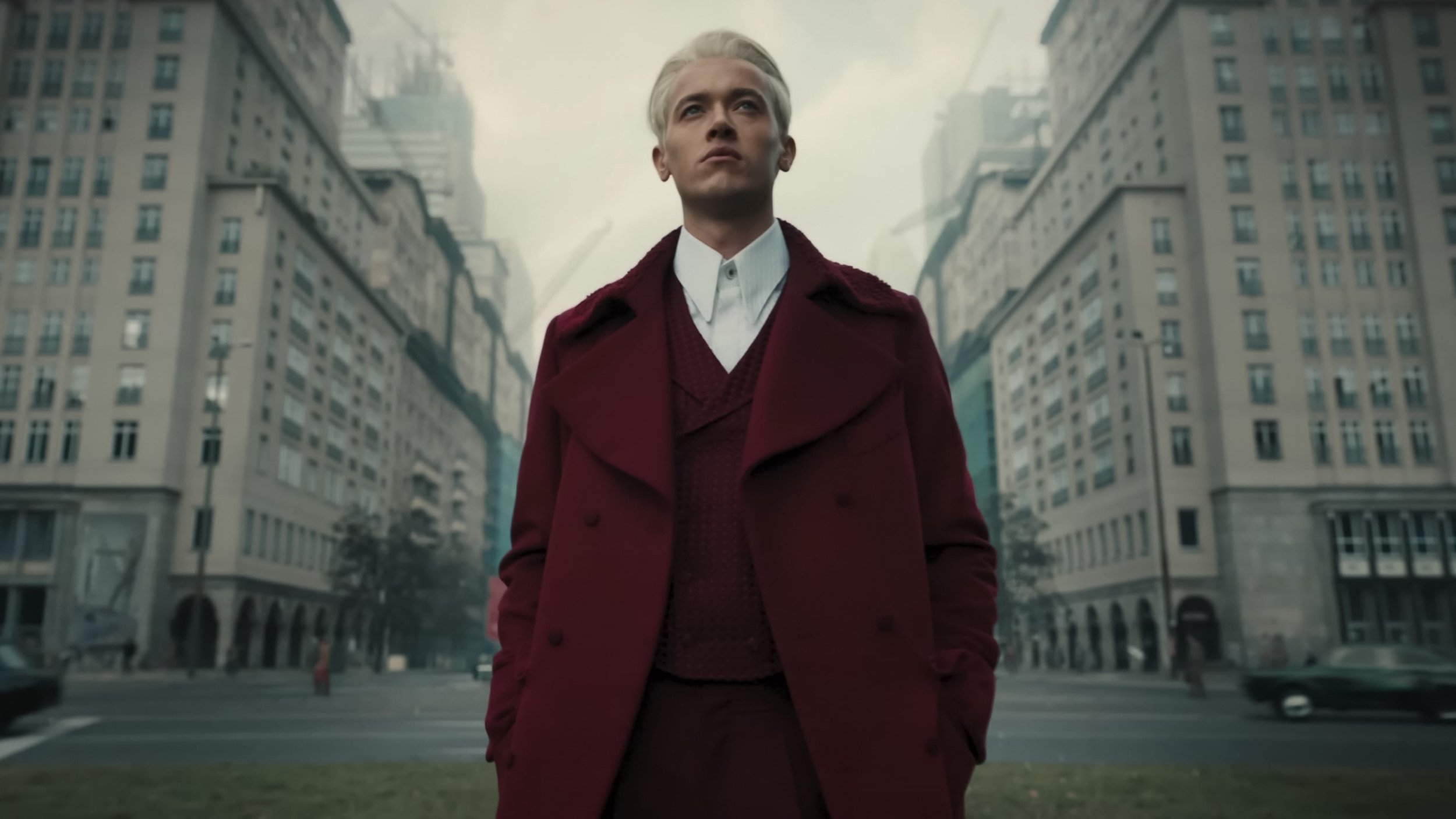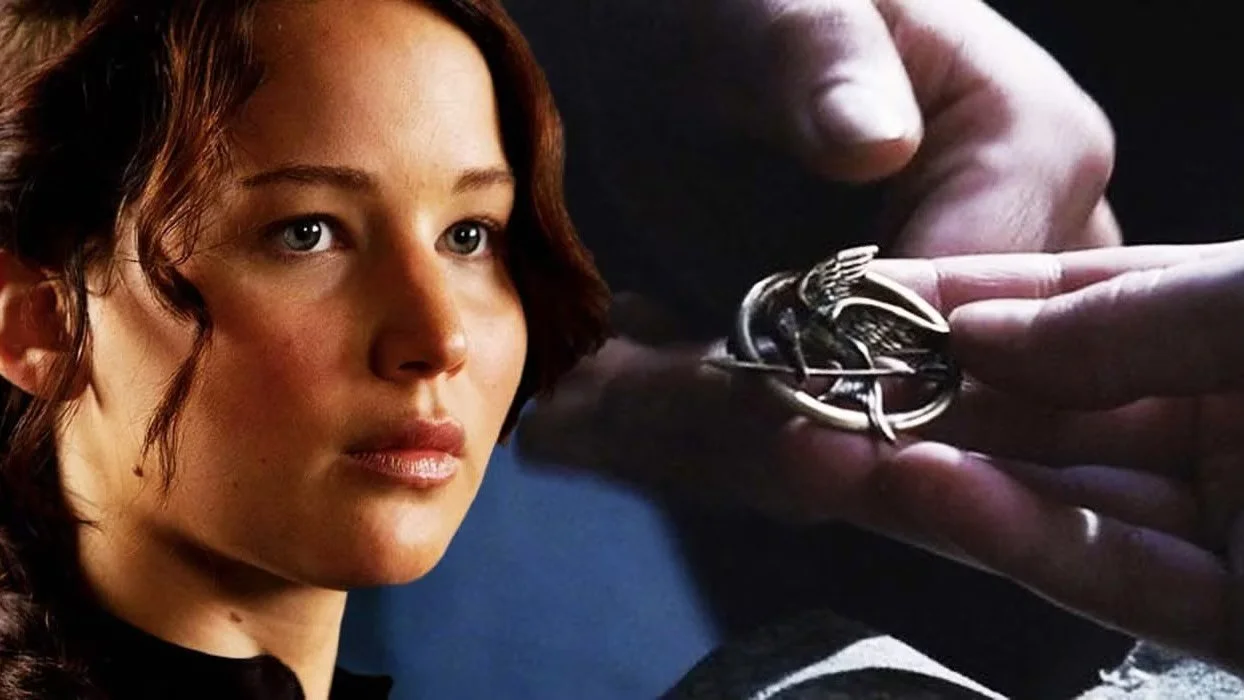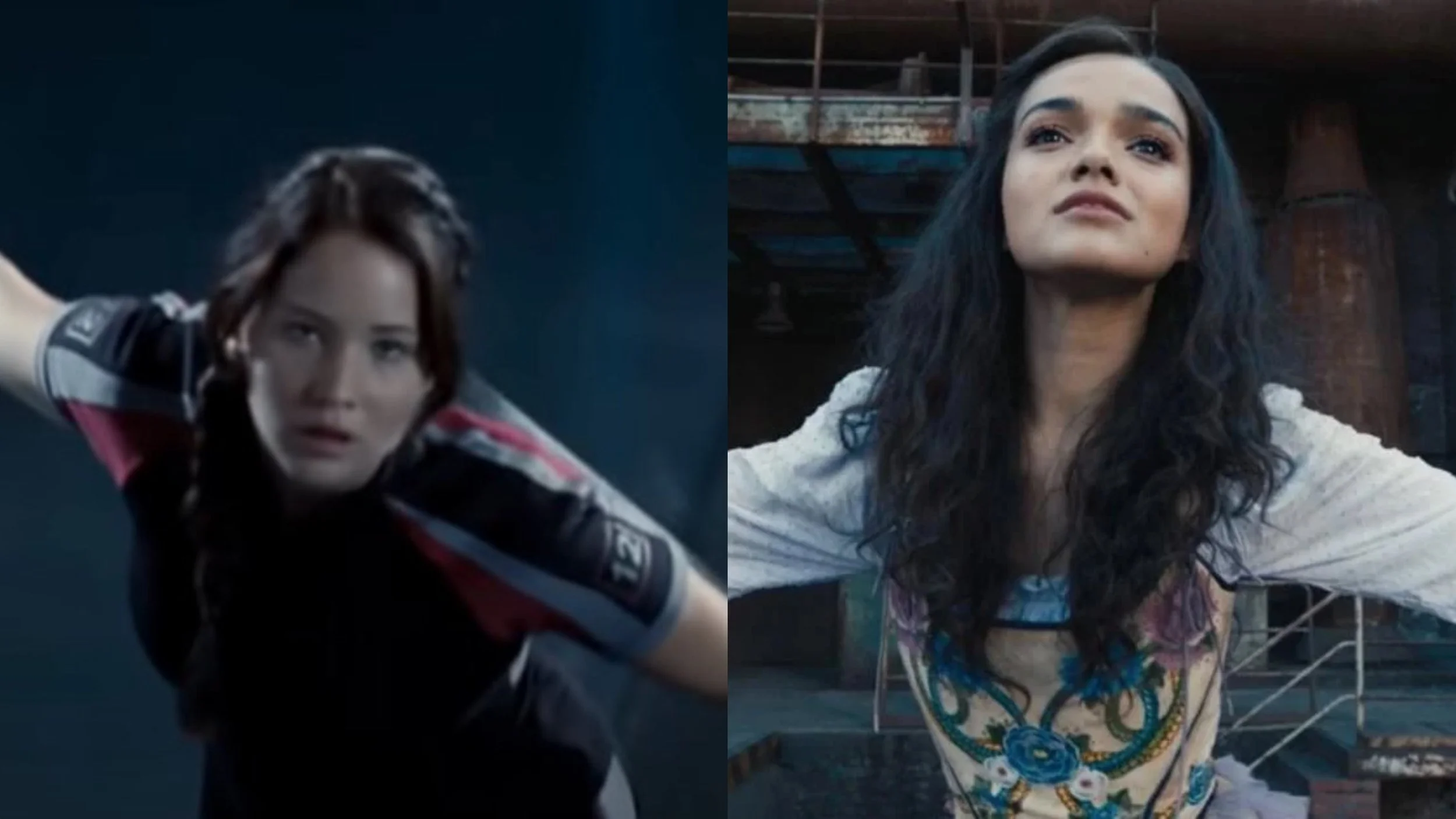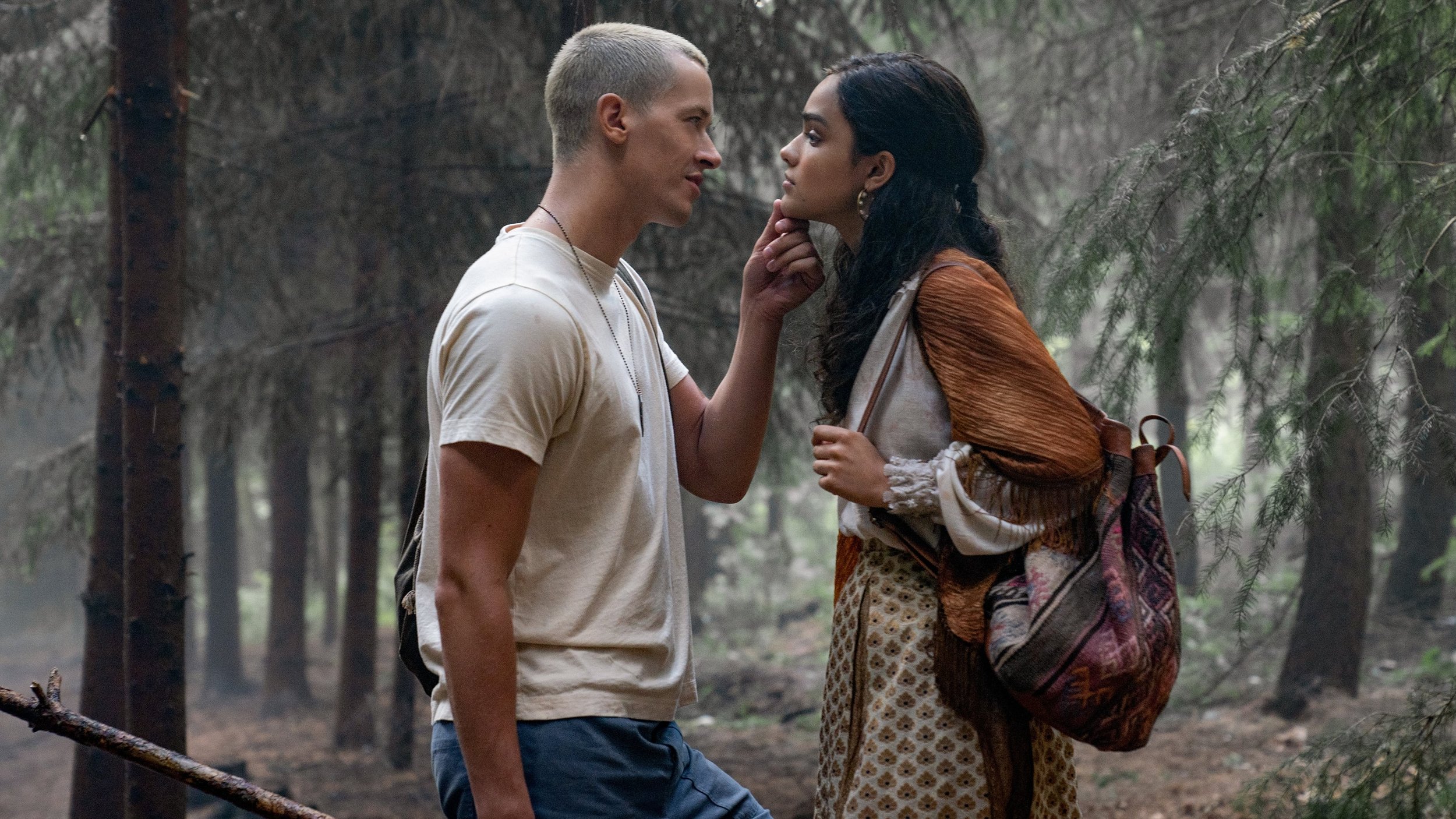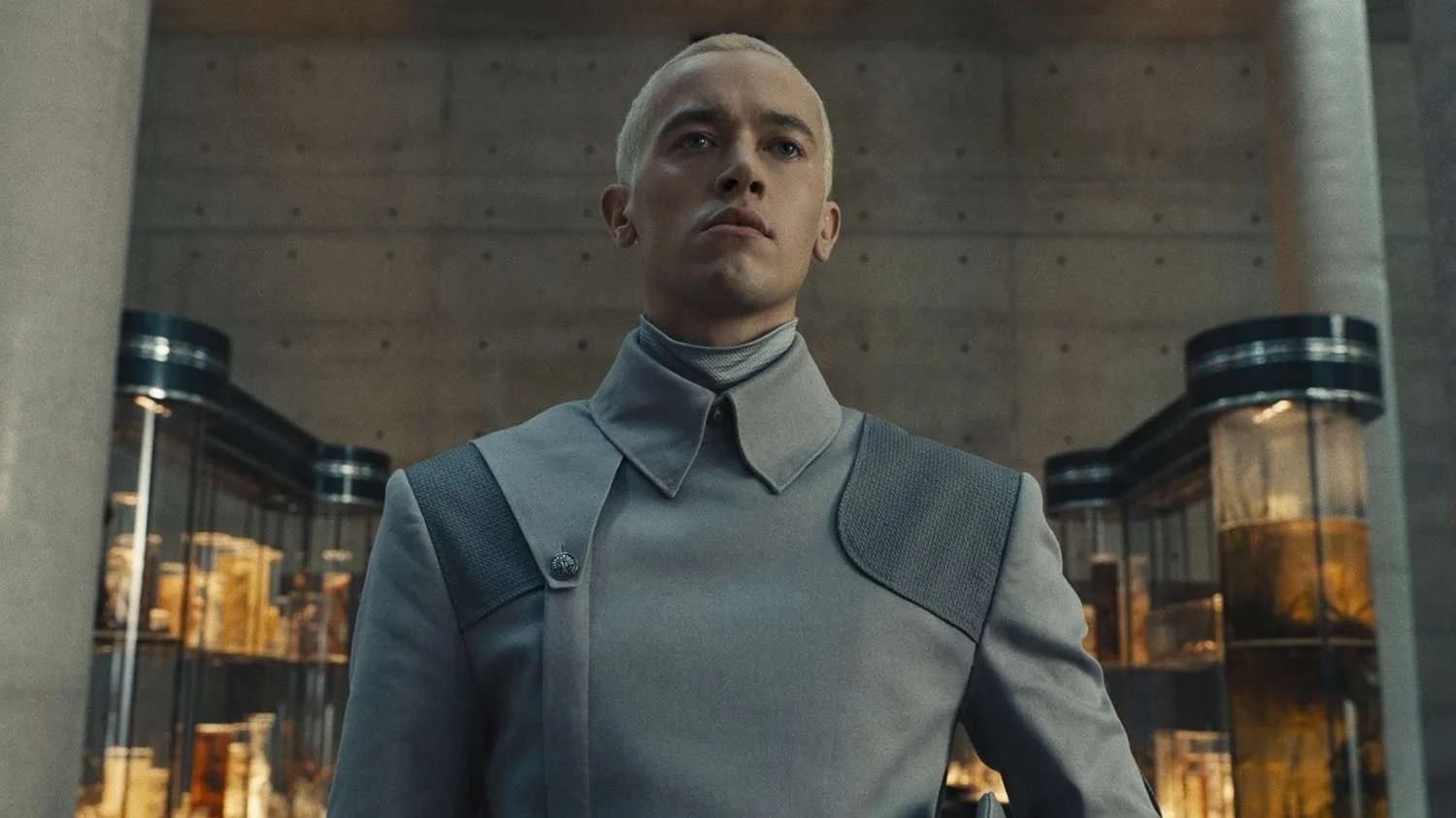These Easter Eggs In The Ballad Of Songbirds and Snakes Bring A New Layer To The Hunger Games Franchise
Whether you’ve read all The Hunger Games books or seen all the movies, you notice certain things that help further cultivate the rich history of Panem. It’s seen with certain characters, what the games mean, what Panem stands for, the objects in this world, the songs, and much more. Theorizing is shared amongst the fandom as a tool to build a community, uncovering the hidden layers, and spreading creativity. The Hunger Games: The Ballad of Songbirds & Snakes gave us a lot of connections in its book edition, but let’s see which ones made it to the big screen. Spoilers ahead, you’ve been warned!
Family Tree Additions
The first time we see the students at the Academy gathering, we meet Arachne Crane (Lilly Cooper), the female mentor of District 10 tribute Brandy (Luna Kuse). Arachne is not only a gossiper, but incredibly rude and taunting to others including her tribute. She is a relative of Seneca Crane (Wesley Bentley), head gamemaker of the 74th Hunger Games before Plutarch took his place. Seneca is said to have inadvertently paved the way for a rebellion after saving Katniss and Peeta from eating berries so there wouldn’t be no victor.
We all know the energetic, charismatic host of the Hunger Games, Caesar Flickerman (Stanley Tucci) from the original films. When the first clips of host Lucky Flickerman (Jason Schwartzman) circulated around social media, people immediately drew the connection and pinned Caesar Flickerman as a nepo baby. We can see clearly where Caesar might have got his humor from because Lucky is incredibly hilarious!
Adding onto the family trees, Ballad Of Songbirds & Snakes shows us Heavensbee Hall at the Academy named after the ultra rich Heavensbee family. Sound familiar yet? We formally meet the head gamemaker of the 75th Hunger Games Plutarch Heavensbee (Philip Hoffman) in Catching Fire where he switches allegiance to rebellion. However, at the 10th Hunger Games, we get a glimpse at the mentor for District 8 tribute Wovey (Sofia Sanchez), which is Hilarius Heavensbee (Florian Burgkart).
Snow’s Roses
Something that is so compelling to watch throughout the film is how Coriolanus (Tom Blyth) becomes more like the tyrant we know him as in the previous films. In the beginning, he’s ambitious, but anxious, trying to help his family survive. As the film progresses, we see him become more stern and adopt a powerful aura especially after killing a couple of people. Along with that changed attitude, the older Snow speaks precisely and slowly. This is evident in how Snow presents himself physically with newer, fancier clothes and a hairstyle that becomes his signature.
President Snow often leaves a white rose for his enemies before they are bombed or killed. In The Ballad of Songbirds and Snakes, we learn that Snow's grandmother grew them on the roof of their apartment. Young Coriolanus is always seen wearing a rose to remain close to his mother who wore rose scented perfume. When Lucy Gray meets Coriolanus, he greets her with a rose and even gifts her his mother’s shawl that smells of roses. In Catching Fire, Peeta makes a joke to Caesar Flickerman that the Capitol showers make them smell like roses. It’s also said that when Snow would poison others and himself to avoid blame he developed sores. The roses he always wears cover the scent of blood. In fact, in The Hunger Games: Mockingjay - Part 1, they talk about how Snow uses poison because it’s “the perfect weapon for a snake,” which brings another layer to the title of this film.
Mockingjays
The mockingjays are a symbol of rebellion and remembrance. But how did this really start? In this film, Dr. Gaul (Viola Davis) has a collection of snakes, incubated animals, and jabberjays. She explains to Coriolanus that the jabberjays mimic back what others say and were released into the districts as spies. The jabberjays eventually mated with mockingbirds which gives us the result of mockingjays. They are able to mimic sounds and echo any vocalization. When Coriolanus and Lucy Gray (Rachel Zegler) are sitting by the lake in District 12, Lucy Gray points out the mockingjays in the tree above them, as Coriolanus doesn't recognize them. Further into the film, we see how Snow is haunted and disoriented by them echoing Lucy’s voice as she sings “The Hanging Tree.”
Looking back at the older movies, Katniss Everdeen (Jennifer Lawrence) and Finnick Odair (Sam Claflin) become distraught hearing Prim (Willow Shields) and Annie’s (Stef Dawson) screaming voices coming from the mockingjays in Catching Fire. Katniss’s mockingjay pin and her victory help lead a rebellion where she uses the bird as a symbol of defiance against the Capitol and rallys the oppressed people of Panem. For Snow, this is the reason he views Katniss as a threat and revolts that she has become this mockingjay symbol — something that reminds him of Lucy.
The Use Of Morphling
The world of Panem has a serious issue with Morphling abuse. It not only acts as a pain medication, but suppresses emotions. We see Dean Highbottom (Peter Dinklage) constantly drink morphling bottles to perhaps cover the guilt he feels from watching the games and how Snow gets poison into Sejanus’ (Josh Andres Rivera) morphling bottles he recovered — leading to Highbottom's death as he takes one. We know from the earlier films that Johanna (Jena Malone) and Gale (Liam Hemsworth) have taken morphling before and briefly meet two addicted tributes from District 6 that are called “The Morphlings.”
All Roads Lead Up To Katniss
There are multiple references in this film that lead us to Katniss. The most obvious one’s being Lucy Gray’s bow at the Reaping and Katniss’ bow at training and Lucy’s “The Hanging Tree” song that she wrote and Katniss adopts later while in the games.
An easter egg you might have missed is when Snow retrieves Sejanus from the arena amidst Marcus’ death. The camera pans over to a bow and some arrows among the rubble to pay homage to Katniss’ weapon of choice in the prior films.
Another connection we see is when a member of the Covey crew gives Lucy Gray a plant. She notices it’s too early to eat it and in a few weeks it will grow into full sized potatoes. She tells Snow that some people call them swamp potatoes, but she prefers calling them Katniss because “it has a nice ring to it.”
Some final nods to Katniss are in the dress Lucy Gray wears at the Reaping and in the arena. Taking a closer look, her corset has Katniss plants and primrose flowers (like her sister!) painted on them. Another correlation is when Lucy Gray spins as she’s about to perform with the Covey band at The Hob which is similar to Katniss’ spin in her Catching Fire dress, designed by Cinna (Lenny Kravitz).
May The Odds Be Ever In Your Favor
In order to prolong her survival in the games, young Snow advises Lucy to sing during the initial interviews with Lucky Flickerman. She performs an emotional ballad that grants her many donations and the love of Panem. Rachel Zegler has said about her role, “Lucy Gray is a performer forced to fight and Katniss is a fighter forced to perform." After her performance, Lucky says “I don’t love your odds, but may they be in your favor,” which refers to Effie Trinket’s (Elizabeth Banks) phrase, “May the odds be ever in your favor," during the District 12 Reaping in The Hunger Games.
Donald Sutherland’s Voice
Take a moment to remember the scene from Mockingjay – Part 1 when Katniss is trying to negotiate with President Snow (Donald Sutherland) to let Peeta go. At this moment, Snow is very aware that her friends are in the Tribute Center. He tells Katniss, “It’s the things we love most that destroy us,” which is pulled from that film and played at the end of Ballad Of Songbirds & Snakes. It takes on a whole new meaning now that we are aware of Lucy Gray’s impact on Coriolanus and how he ended up becoming the snake.
Can You Trust Everyone?
Trust is the most important aspect of The Ballad of Songbirds & Snakes, but, towards the end of the film, we see that trust between Coriolanus and Lucy has been broken. Lucy Gray leaves the cabin they’re staying in saying she’s going to bring back some Katniss (!!!!), and, in a paranoid state, Corio tries to find her and shoots at her. In contrast, before Katniss shoots up at the dome in Catching Fire, she’s given the chance to shoot Finnick. Katniss forgoes this chance since she’s grown to develop a sincere friendship with him and ultimately trusts him.
This film had so many connections to the original films that it brings a new layer to the story. Keep an eye out for them in The Hunger Games: Ballad Of Songbirds & Snakes out now in theaters.



